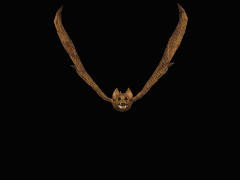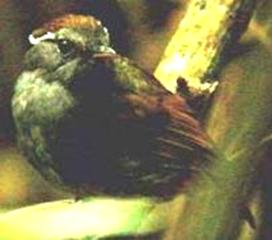


|
Conophagidae:
The gnateaters are a family of ten small passerine bird species in two genera, which occur in South America. The family was formerly restricted to the gnateater genus Conopophaga; analysis of mtDNA cytochrome b and NADH dehydrogenase subunit 2 sequences (Rice, 2005) indicates that the bar-bellied "antpittas", Pittasoma, also belong into this family. These might perhaps more appropriately called gnatpittas as their similarity to the true antpittas is due to convergent evolution. They are very closely related to the antbirds and less closely to the antpittas and tapaculos. They are birds of dense wet forest undergrowth, bamboo stands, and the forest floor in the Amazon and Orinoco basins and surrounding slightly higher ground. They are round, short-tailed, and long-legged birds, about 12-18 cm (5-7 in) in length. They are quite upright when standing. Sexes differ in plumage, and males are attractively coloured in shades of red and brown, with sexual dichromatism less pronounced in Pittasoma. Most Conopophaga species have a white tuft behind the eye. They are insectivorous as the group name implies. |
